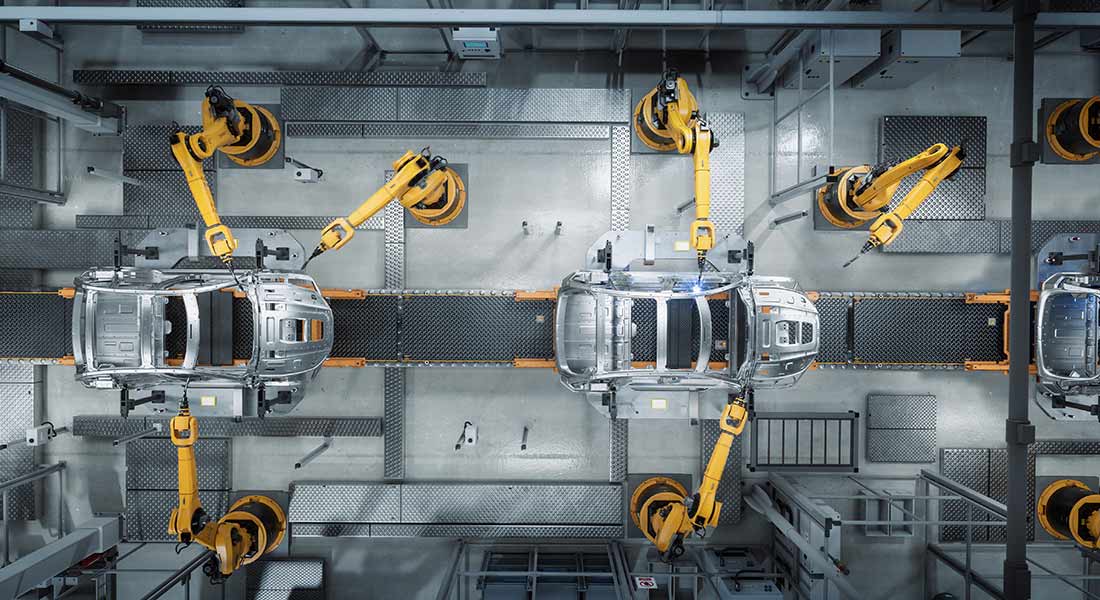The 2023 Section 179 Deadline is Approaching
Estimated reading time: 5 minutes
Well, the summer months are in the rearview mirror, and we are in the final quarter of 2023. The leaves are changing colors, the weather is cooling, and friends and families will get together to celebrate the holidays. But did you know that beyond its aesthetic appeal, the year’s final months present a unique opportunity for small businesses like yours?
We are referring to Section 179, which lets businesses deduct the cost of qualifying new or used equipment. As a business owner, understanding Section 179 of the Internal Revenue Code can be overwhelming, but this Balboa Capital blog article can help. In it, you will learn how this tax deduction works and how to elect it before the December 31, 2023 deadline.
What is Section 179?
The Section 179 tax deduction is a valuable small business tax deduction that allows you to deduct the total cost of qualifying equipment, vehicles, machinery, and software purchased or financed during the 2023 tax year. Section 179 was created to encourage business owners to invest in their companies by providing accelerated depreciation benefits.
This deduction can reduce your taxable income dollar-for-dollar, resulting in significant savings come tax season. It’s important to note that unlike regular depreciation methods, which spread out deductions over several years, Section 179 allows you to deduct the entire cost upfront.
Section 179 deduction limit for 2023.
In 2023, the Section 179 deduction limit for eligible equipment purchases is $1,160,000, and the phase-out threshold is $2,890,0001. For example, suppose you purchase or finance $50,000 in qualifying office furniture, equipment, and computers for your business before the December 31, 2023 deadline. In that case, you can write off the total amount for the 2023 tax year.
If you purchase or finance more than $2,890,000 worth of qualifying equipment in 2023, your deductions will decrease dollar-for-dollar after you exceed the phase-out limit. Let us use a construction company to illustrate how the phase-out limit works. The company financed $3,250,000 of heavy equipment and storage structures in 2023. As a result, the company is $360,000 over the phase-out limit, and its deduction would decrease by this amount.
Bonus depreciation will decrease in 2024.
Bonus depreciation is similar to the Section 179 tax deduction in that it offers an immediate expense deduction. However, the primary difference is that bonus depreciation lets you deduct a percentage of qualifying equipment upfront while, as mentioned earlier, Section 179 enables you to deduct a specific dollar amount. Bonus depreciation applies to many types of new and used equipment with a useful life of up to 20 years.
In 2023, the bonus depreciation amount is 80% and is scheduled to decrease to 60% in 2024. So, if you procure qualifying equipment in 2023, you can deduct a higher percentage of the purchase price on your 2023 tax return, provided you put the equipment into business use before the deadline. For example, a $70,000 equipment purchase in 2023 would have a first-year depreciation of $56,000 ($70,000 x 80%). If the $70,000 equipment purchase is made in 2024, the first-year depreciation is $42,000 ($70,000 x 60%).
Some states have different tax rules.
Not every U.S. state conforms to the Tax Cuts and Jobs Act provision that allows businesses to elect bonus depreciation for qualifying equipment purchases2. Additionally, Section 179 does not apply in U.S. states with no corporate income tax, and certain U.S. states conform with different deduction limits3.
If you have questions about Section 179 or want to determine if a particular type of equipment qualifies for a deduction, consult an accountant or attorney. They can make recommendations based on your business’s needs and inform you of your state’s Section 179 and bonus depreciation rules and limits.
The Section 179 deadline is December 31.
As we approach the New Year, you will navigate through various challenges that often characterize the year’s final quarter. You will undoubtedly be busy juggling employees’ vacation schedules, stocking up on inventory, organizing your holiday sales, and taking the steps necessary to finish the year strong. But that doesn’t mean you need to put off investing in new or used equipment that can benefit your business.
You can claim an immediate deduction by purchasing or financing qualifying equipment and placing it into business service before midnight, December 31, 2023. Not only is this an effective financial strategy, but it is also an operational strategy that can help set the stage for success in 2024. Newer, more up-to-date equipment can help increase productivity and set your business apart.
How to elect the deduction.
To elect the Section 179 tax deduction in 2023, you must purchase or finance equipment that qualifies for the deduction and complete Internal Revenue Service (IRS) form 4562. It is important to note that the deduction is not automatic. Just because you invested in eligible equipment does not mean you can get the tax deduction — you need to elect it and provide the correct paperwork on your tax return.
References:
- https://www.blockadvisors.com/resource-center/small-business-tax-prep/section-179-expensing/
- https://tax.thomsonreuters.com/en/glossary/bonus-depreciation
- https://www.thebalancemoney.com/depreciation-deductions-for-state-taxes-398930
Balboa Capital, a Division of Ameris Bank, is not affiliated with nor endorses H&R Block/Block Advisors, Thomson Reuters®, Internal Revenue Service (IRS), or The Balance. The opinions voiced in this material are for general information only and are not intended to provide specific advice or recommendations for any individual.
Section 179 limits and information on the Balboa Capital website are for illustrative purposes only; the Section 179 limits and information provided are subject to change by the IRS. Please visit the IRS website or consult a qualified tax professional for confirmation of the current Section 179 limits and information related to your situation.
Dean Morrison
Balboa Capital, A Division of Ameris Bank | Director Business Development
(O) 949.553.3408 | (M) 954.224.3390 | (E) dean.morrison@balboacapital.com









